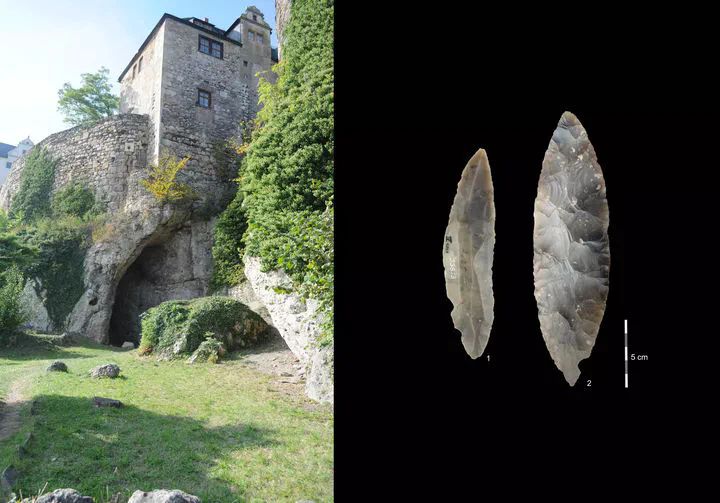Homo sapiens reached the higher latitudes of Europe by 45,000 years ago
Feb 1, 2024·,,,,,,,,,,,,,,,,,,,,,,,,,,,,,,,,·
0 min read
Dorothea Mylopotamitaki
Marcel Weiss
Helen Fewlass
Elena Irene Zavala
Hélène Rougier
Arev Pelin Sümer
Mateja Hajdinjak
Geoff M. Smith
Karen Ruebens
Virginie Sinet-Mathiot
Sarah Pederzani
Elena Essel
Florian S. Harking
Huan Xia
Jakob Hansen
André Kirchner
Tobias Lauer
Mareike Stahlschmidt
Michael Hein
Sahra Talamo
Lukas Wacker
Harald Meller
Holger Dietl
Jörg Orschiedt
Jesper v. Olsen
Hugo Zeberg
Kay Prüfer
Johannes Krause
Matthias Meyer
Frido Welker
Shannon P. McPherron
Tim Schüler
Jean-Jacques Hublin

Abstract
The Middle to Upper Palaeolithic transition in Europe is associated with the regional disappearance of Neanderthals and the spread of Homo sapiens. Late Neanderthals persisted in western Europe several millennia after the occurrence of H. sapiens in eastern Europe1. Local hybridization between the two groups occurred, but not on all occasions. Archaeological evidence also indicates the presence of several technocomplexes during this transition, complicating our understanding and the association of behavioural adaptations with specific hominin groups. One such technocomplex for which the makers are unknown is the Lincombian–Ranisian–Jerzmanowician (LRJ), which has been described in northwestern and central Europe. Here we present the morphological and proteomic taxonomic identification, mitochondrial DNA analysis and direct radiocarbon dating of human remains directly associated with an LRJ assemblage at the site Ilsenhöhle in Ranis (Germany). These human remains are among the earliest directly dated Upper Palaeolithic H. sapiens remains in Eurasia. We show that early H. sapiens associated with the LRJ were present in central and northwestern Europe long before the extinction of late Neanderthals in southwestern Europe. Our results strengthen the notion of a patchwork of distinct human populations and technocomplexes present in Europe during this transitional period.
Type
Publication
Nature